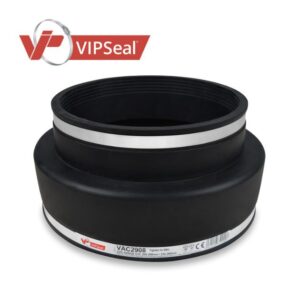Waste pipes, as their name implies, handle all the "dirty work" in our daily lives—literally taking away the wastewater generated by sinks, showers, baths, and more. Whether you're replacing a system or troubleshooting issues, understanding the differences between various types of waste systems can be incredibly useful. This guide will walk you through the basics and help you make informed decisions.
After reading this, you’ll be better equipped to either maintain or upgrade your existing system to ensure it's efficient and long-lasting. Key takeaways include:
- A push fit to solvent weld adaptor allows seamless integration between push fit and solvent weld pipes and fittings.
- Ensure compliance with local regulations when using adaptors to avoid potential safety hazards.
Defining a Waste System
Most waste systems consist of pipes that are either 32mm, 40mm, or 50mm in diameter. These pipes connect fixtures like sinks and baths to the main drain, ensuring that wastewater is safely transported away. While a soil system handles larger waste materials, such as those from toilets, it’s important to remember that the two systems serve different purposes. If you’re unsure about regulations, our blog post on Document H provides a comprehensive overview.
Different Types of Waste Systems
When choosing a waste system, consider factors such as material and connection type. Copper pipes, once the industry standard, remain popular among experienced plumbers for their aesthetic appeal and ease of use in tight spaces. However, plastic pipes have gained favor due to their cost-effectiveness and durability. They are lightweight, weather-resistant, and available in both push fit and solvent weld varieties. Push fit systems are generally quicker to install, making them ideal for DIY projects, while solvent weld systems offer greater longevity and stability.
Push Fit Connections
Push fit connections rely on rubber seals rather than glue to create watertight joints. This simplicity allows for easy disassembly if adjustments are needed. Using silicone lubricant can make the process smoother, ensuring a snug fit. The convenience of push fit systems is unmatched, but it’s crucial to monitor the condition of the seals over time, as they may degrade and need replacement.
Solvent Weld Connections
In contrast, solvent weld connections are chemically bonded, creating a permanent joint. This method results in a strong, leak-free connection but lacks the flexibility of push fit systems. Once installed, solvent weld joints cannot be separated without cutting the pipe, which poses challenges if corrections are necessary.
Which System is Better?
Choosing between push fit and solvent weld systems depends on your specific needs. Push fit systems excel in speed and accessibility, making them perfect for DIY enthusiasts. On the other hand, solvent weld systems provide superior strength and durability, ideal for high-stress environments like outdoor installations. However, repairing solvent weld systems can be costly and complex.
Despite their differences, both systems share several advantages, such as high temperature resistance (up to 76°C as standard) and acid resistance. However, UV protection is essential if exposed to sunlight. For those looking to combine push fit and solvent weld systems, the right adaptors are critical. Ensure compatibility by sticking to pipes from the same manufacturer whenever possible.
Connecting Waste Pipes to Older Systems
Connecting modern plastic pipes to older copper or lead systems is entirely feasible. Compression fittings are often used to accommodate variations in system dimensions, ensuring a secure connection. Always double-check measurements to prevent leaks or malfunctions.
Connecting to Cast Iron Soil Stacks
Connecting push fit or solvent weld pipes to a cast iron soil stack requires the correct boss adaptors. Given the risks associated with asbestos in older buildings, consulting a professional is strongly recommended. Their expertise will guide you through the safest approach for your project.
Rounding Up
In summary, both systems are viable options, and adaptors enable compatibility between them. However, consistency within a single system simplifies future maintenance and repairs. The principles discussed here apply to underground piping as well.
We hope this guide has clarified your choices. If anything remains unclear, feel free to reach out—we’d be happy to assist!
Shop Waste Pipes and Fittings

11 1/2 Inch – 9 1/4 Inch (290-265mm to 260-235mm) Flexible Adaptor
Free Running Wire Thread Insert
Free running wire thread inserts can be used to strengthen threads, giving applications a longer life. Each insert sharing the load over the entire bolt and hole, improving holding or pull out resistance. With a Wire Thread Insert installed, a more even distribution of load and stress can be achieved. Free running wire thread inserts are generally made of type 304(18-8) stainless steel wire rolled into a diamond shape cross-section.
Free Running Wire Thread Insert,Hardware Fastener Wire Thread Insert,Stainless Steel Wire Thread Repair Insert,Stainless Steel Wire Thread Inserts
Shenyang Helisert Technology Co., Ltd , https://www.helisert.com